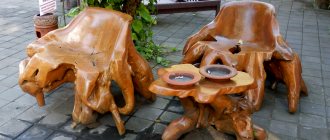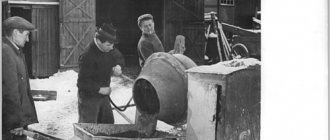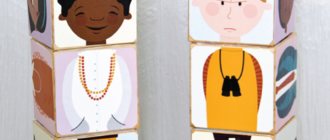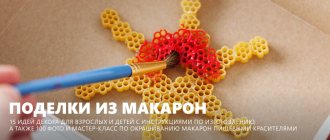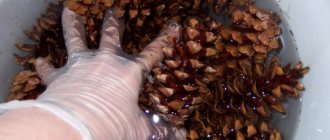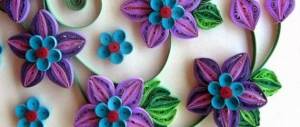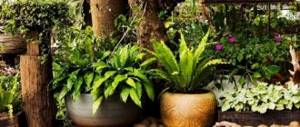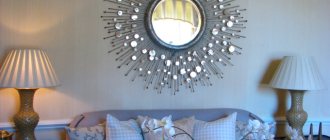by Alexey | Crafts Vintage For Friends Gifts For Loved Ones Decor For Men For Women Workshop Cheap Accessories | Sunday, March 30, 2014
| Click "Like" to follow Make-Self.net on Facebook |
Concrete as a material for handicrafts has gained enormous popularity and has already become a “trend” this year, not without reason, it is an inexpensive and fairly easy-to-use material. Why not do one of these projects? Enjoy...
How to make a flower pot from concrete
For this project we will need a concrete mixture and several free-form containers. We place a small container in a larger one and fill it with concrete. We make the small container heavier, thereby maintaining the shape of the future pot.
The nuances of working with cement mortar
For decoration and design additions, you can use flower pots, flowerpots, figurines of fairy-tale characters or plant objects made with your own hands from cement. This material cannot be called capricious, and most people have a lot or little experience working with it. Still, there are several important rules that must be followed to ensure that crafts made from cement mortar are of high quality and durable.
The technology for preparing the mixture itself is as follows . The main components are prepared: cement, construction sand, water and tile adhesive (for better ductility and reducing the risk of microcracks). For 1 part of cement, take 2 parts of sand (for greater strength, you can take 1 part) and 1 part of glue. Lastly, add water in small portions to the consistency of thick sour cream. It is convenient to work with such a mixture: it does not flow and at the same time is quite plastic.
All cement products require prolonged drying. Hardening can last up to 7 days. To prevent the surface from cracking, the finished creation is covered with polyethylene. To give the product a beautiful and correct shape, the base is placed on a mound of sand or buried in it (depending on the idea), but not on a flat surface.
After complete hardening, the figure must be coated with a primer and only after that can paint or varnish be applied. If the craft has roughness and other irregularities, it should be refined with sandpaper and a file before priming.
In addition to cement mortar, concrete is sometimes used, which is characterized by the presence of large fractions (pebbles or crushed stone) and increased strength. Crafts made from concrete for a summer residence can be represented by large monolithic boulders, and this material is also convenient to use to create a base for various compositions (a platform for a fountain, a pedestal for a sculpture, a terrace for flower pots, etc.).
Another material similar in its application is gypsum. It is not as strong as cement, but more plastic and decorative. It can be used to create hollow shapes. For garden creativity, molding (sculptural), acrylic and architectural types are used. When working with this material, you need to take into account its rapid hardening. It is often recommended to add it to cement mortar when creating sculptures.
Related article: How and from what to make a monkey with your own hands
“Yak garneau paint a concrete block for landscape decoration”: ideas
“How should I paint a concrete block for landscape decoration?” - such a request can be found on the Internet today. It is written in Ukrainian. Residents of Ukraine are increasingly decorating their garden plots with concrete figures. If in Russia this is a loft style, then in Ukraine it is a simple rustic style that is popular. Figurines and images of birds on the facades of houses or in gardens are purely Ukrainian folklore. Here are some ideas for such decor:
- The photo below shows how easy it is to make a swan from concrete.
- The top is painted with ordinary lime or white paint, and a flower is planted inside.
- The beak, eyes - everything is like a real bird.
Concrete decor
- But on the flower bed there is a figurine of a sparrow, painted white.
Decor from concrete Decor from concrete Decor from concrete Decor from concrete Decor from concrete Decor from concrete Decor from concrete
Have these ideas inspired you to create something interesting and original? Don’t be afraid to fantasize, be creative and create beautiful decor with your own hands. You will find even more ideas in the video below. Good luck!
Interesting ideas for beginners
Having no experience in using cement for decorative purposes, it is better to start with something simple that does not require modeling skills and obtaining the desired consistency. The first exhibits in your garden can be cute mushrooms, colorful balls or original flower pots.
To make a mushroom you will need an old rubber ball (the size of the cap will depend on its size), a plastic bottle (it will become the basis for the stem, its size should be proportional to the cap), a metal rod to attach the cap to the stem. The ball is cut into two halves, one of which is placed in a bucket of sand and pressed evenly. Next, cement mortar is poured into the resulting form and leveled.
The bottom and neck of a plastic bottle are cut off and inserted into the filled form in the center, immersing it by 1 - 2 cm. Then, using a long iron rod, the future stem and cap of the mushroom are connected and the cavity inside the bottle is filled with the solution. The product should harden for several days, after which you need to remove the piece of the ball and the plastic cylinder.
After a few more days, the product can be coated with paint and decorated with various elements. Mushrooms of different sizes look impressive on the plot in the form of a small clearing. It is also worth noting that your imagination may tell you to use other containers (bowls, jars) and methods for making garden mushrooms.
It’s enough to just make an openwork ball that seems so light and airy. For the base, use a balloon (the size of the future shapes depends on how much you inflate the balloon). Next, any rope is placed in the prepared solution and then the ball is wrapped around it.
Do not wrap the base too tightly; you need to leave enough holes for further removal of pieces of the burst ball. When the product is dry, you can begin decorative coating.
If you cover the balloons with cement mortar with a small amount of gypsum added for faster hardening, you can get original garden lanterns or flower pots.
Using this technique you can also make vases for dried flowers. In this case, not only the outer side, but also the inner side is subjected to decorative painting.
If you pour the solution into a small hole in rubber balls, you can get monolithic balls of different sizes. Painted in different bright colors and randomly scattered around the garden, they will become a laconic and stylish decoration.
Using plastic containers, you can make a flower pot for Crassula and Crassula Ovata cacti. The container is wrapped in a plastic bag, and a bag of clay or sand is placed inside so that the container holds its shape. Next, it is covered with cement mortar. After complete drying, all auxiliary materials are removed, drainage holes are made in the bottom using a drill, the product is primed and painted.
Related article: The importance of a façade passport
It's very easy to make a flowerpot using a plastic bucket or vase and another suitable container.
One container is inserted into another, and the solution is poured into the space between them. The result is a high-quality product that can be further decorated by showing your imagination to the fullest.
Flowers planted in flowerpots made from crossed palms look attractive. To create such a masterpiece, use ordinary rubber gloves, which are evenly filled with the solution. For rigidity, you need to insert a thick wire rod into each finger. To ensure a high-quality product, air bubbles must not be allowed to form.
When the gloves are filled, they are given the desired shape and fixed. After a few days, the rubber is cut and removed. If you need to connect two palms, then use the same solution. At the final stage, the surface is polished with sandpaper, primed and painted.
Complex figures with a frame
It’s more fun to decorate your country house with sculptures of animals and mythical characters. Such creations involve the preliminary production of a durable frame and layer-by-layer application of cement mortar.
Interesting flowerpots can be made using buckets from construction mixtures. At the first stage, a container of suitable size is wrapped with a plaster mesh and covered with a thick layer of cement. At the second stage, until complete hardening, decorative adjustments are made, making an imitation of an old stump with natural wrinkles on the bark.
A monolithic figure of a hippopotamus would look appropriate near artificial reservoirs. The place for it must be determined immediately and carefully aligned, since in the future the figure will be stationary.
Two elongated plastic basins, which must be fastened with wire, are suitable as a frame. Another option is also possible: a thick cement solution is covered on top of a pile of broken bricks or crushed stone.
The figure itself does not contain complex elements and is easy to perform. After hardening, the product is treated with fixing impregnation and dry pigment for concrete, rubbing the powder with a hard sponge.
More complex sculptures are made in several stages: 1) making a frame from wire and foam plastic or containers; 2) covering the workpiece with a plaster mesh; 3) applying the mixture in several layers; 4) formation of small details (facial features, special texture, folds of clothing, etc.); 5) priming and painting the finished work.
Flowerpots in the shape of swans will become an elegant decoration of the garden. The body frame is an old plastic basin, the neck is woven wire. The head, wings and imitation plumage will have to be made from a cement mixture, showing the skills of a sculptor.
Monolithic figures have a significant weight, so as an alternative there is a way to create lightweight large objects. You can decorate your garden with boulders of different sizes.
To make them, any unnecessary and lightweight material (cuts of polyurethane foam, plastic bottles, polystyrene foam) is tied into a tight lump with wire.
Related article: What types of industrial curtains are there: types and materials
The resulting base is wrapped in a plaster mesh and covered with thick cement mortar. The more irregularities and protrusions there are, the more natural the “stone” will look.
Small garden figurines are made from a mixture of cement with the addition of gypsum or Portland cement.
Here you can use the manufacturing methods described above, as well as any basics: old toys, items of clothing, household utensils.
